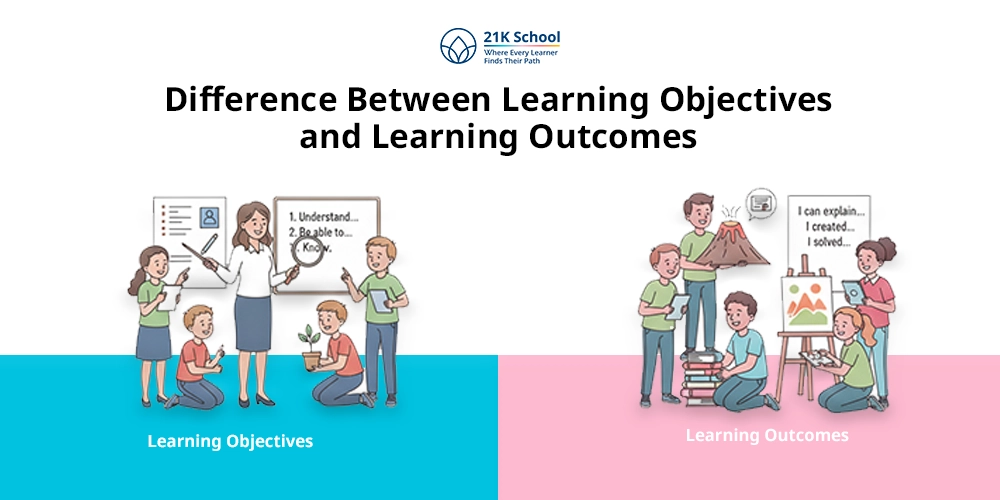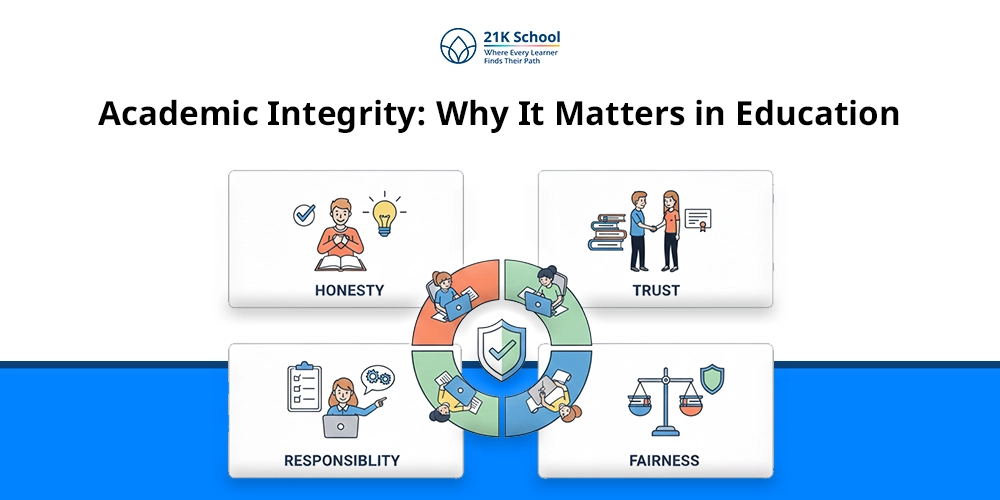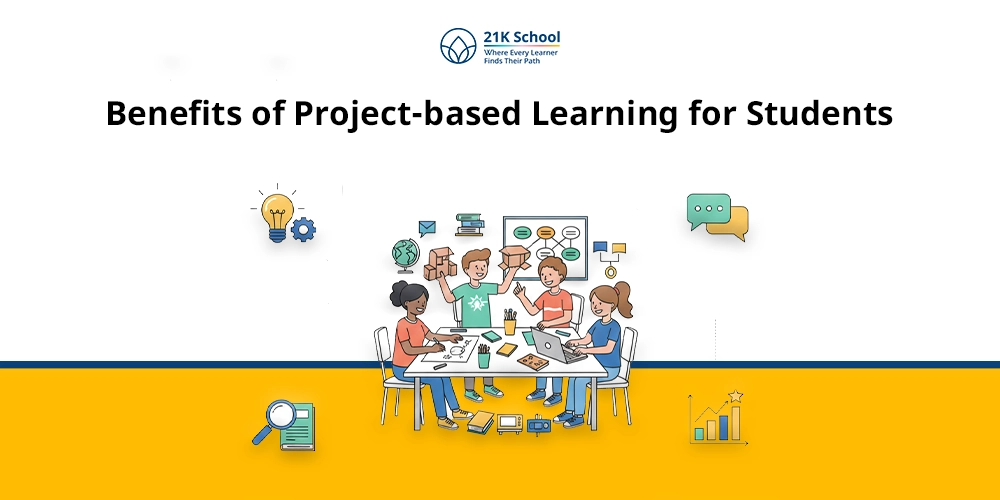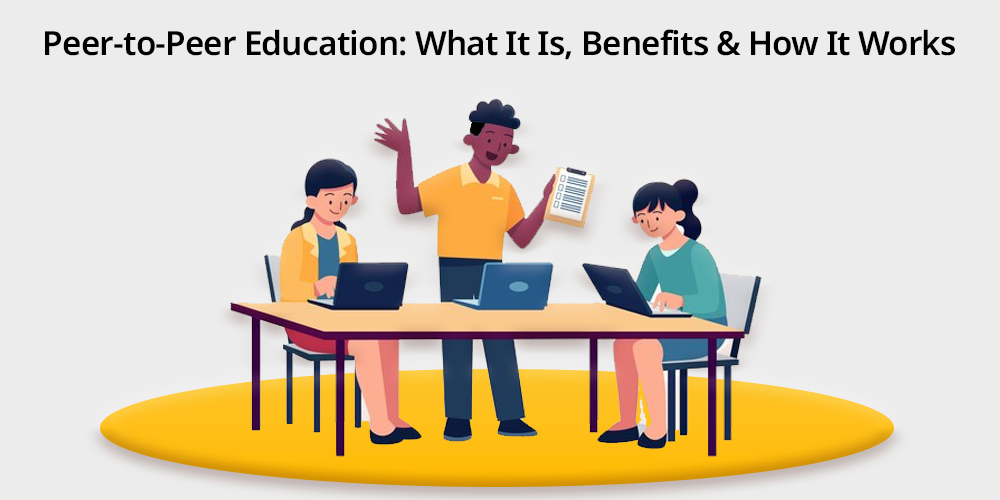
Do you know why peer-to-peer education is essential in fostering a child’s development?
Peer to peer education is important for developing critical thinking activities for kids and problem-solving abilities among kids. Peer to peer education also promotes confidence and the spirit of teamwork.
Peer to peer education is a collaborative way of sharing knowledge among peers.
This method of knowledge sharing is considered an informal method and it helps in the cognitive development of children and sharing each other’s knowledge.
With a clear educational objective peer-to-peer training is a more structured method that involves passing along particular knowledge or skills from one peer to another.
A designated trainer may be involved in mentoring peers and it usually adheres to a formal curriculum or training plan.
Contents
- What is Peer to Peer Education?
- Importance of Peer to Peer Education
- Peer to Peer Learning in the Classroom
- Difference Between Peer to Peer Learning in the Classroom and Workplace
- Examples of Peer to Peer Education
- Disadvantages of Peer to Peer Education
- How to Implement Peer to Peer Education?
- Conclusion
What is Peer to Peer Education?
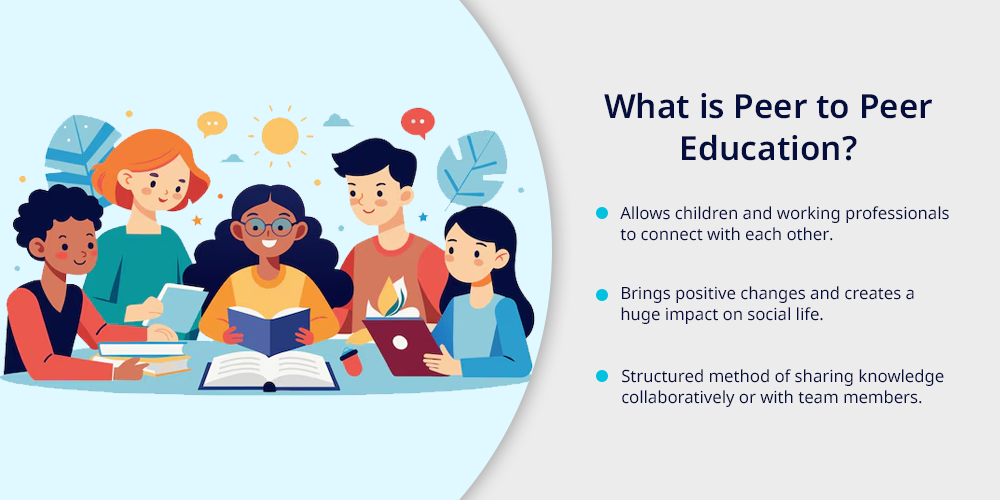
Peer to Peer education is a structured method of sharing knowledge collaboratively or with team members.
This allows children and working professionals to connect with each other and share their ideas, thoughts, expressions and concepts on the same subject or projects.
Peer to peer education is essential for bringing positive changes and creating a huge impact on social life.
Peer to peer education doesn’t only mean working together, but also emphasises participating in group projects, debates, discussions, and so on.
Through peer to peer study, students can gain higher opportunities in academics as well as in their careers. Collaborative learning systems are mostly used in online schools or digital platforms, such as 21K school.
Importance of Peer to Peer Education
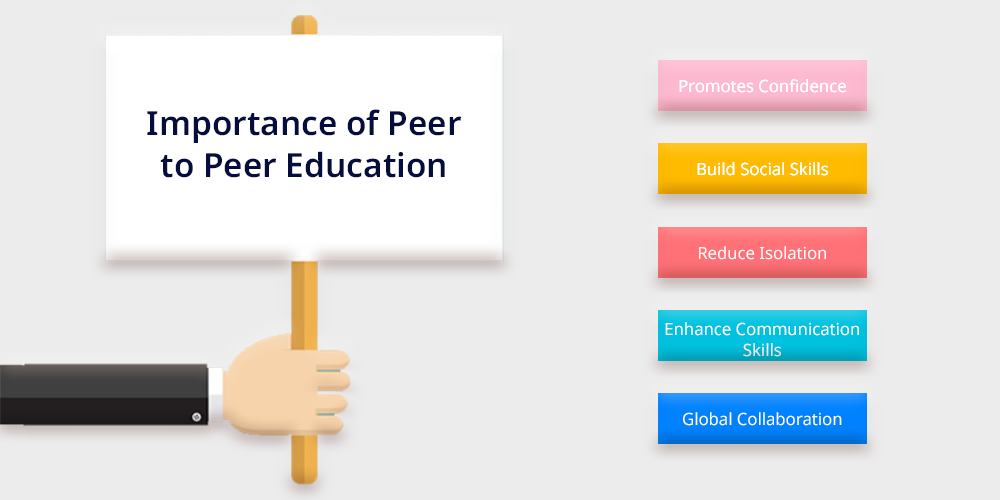
Peer to Peer learning is very much important for developing a positive learning environment and also promotes integrated education.
This helps students boost their mental abilities, confidence, and motivation, and also enhances their teamwork skills.
Teachers and parents need to develop a sense of teamwork among students in order to achieve the importance of learning. Below are some key benefits of peer-to-peer education.
1. Promotes Confidence:
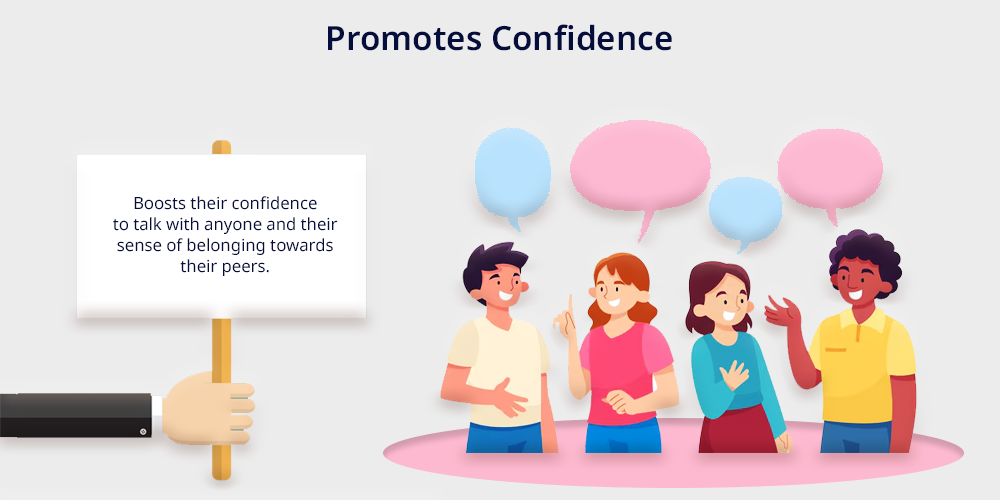
Through peer to peer education students engage in collaborative learning that allows them to share their thoughts, ideas, concepts, etc. This boosts their confidence to talk with anyone and their sense of belonging towards their peers.
2. Build Social Skills:
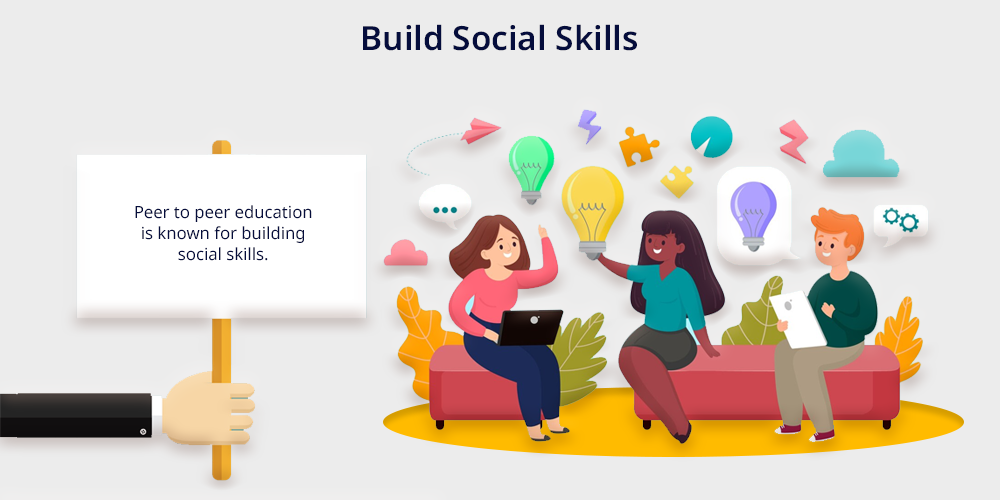
Peer to peer education is known for building social skills. Through peer to peer education, students can develop friendship, cooperation, and unity that helps in understanding the necessity of socialization.
3. Reduce Isolation:
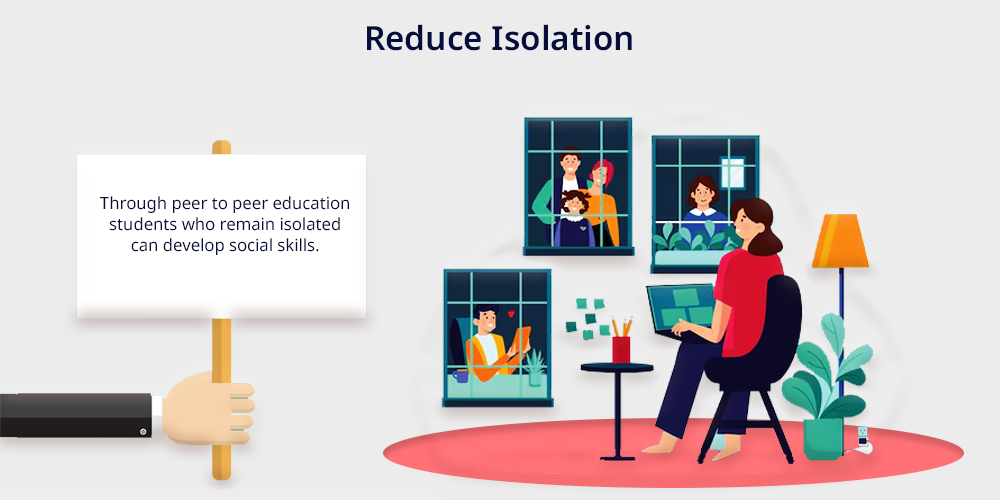
Through peer to peer education students who remain isolated can develop social skills. This helps them to become more engaged with others and develop social insights. This also helps children to gain more confidence and attention.
4. Enhance Communication Skills:
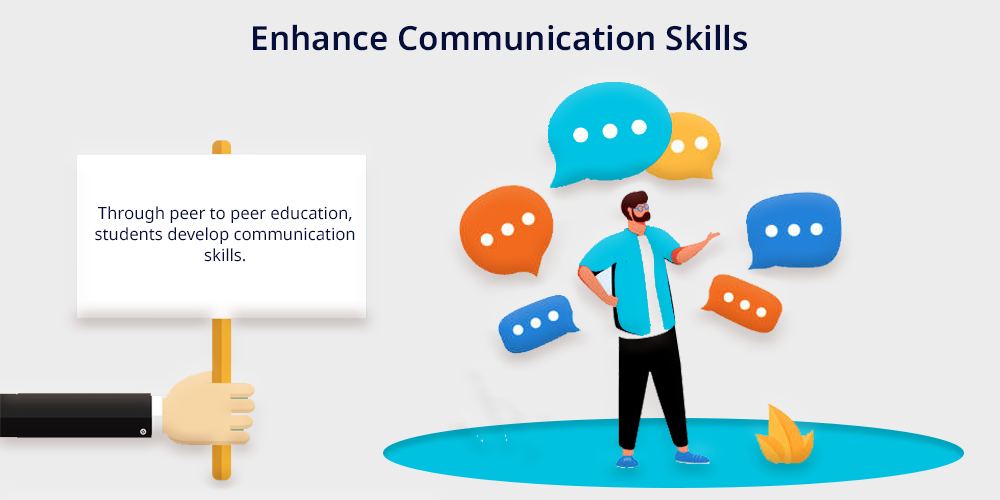
Through peer to peer education, students develop communication skills. Students with a lack of communication skills can develop better communication practices that allow them to talk more confidently.
5. Global Collaboration:
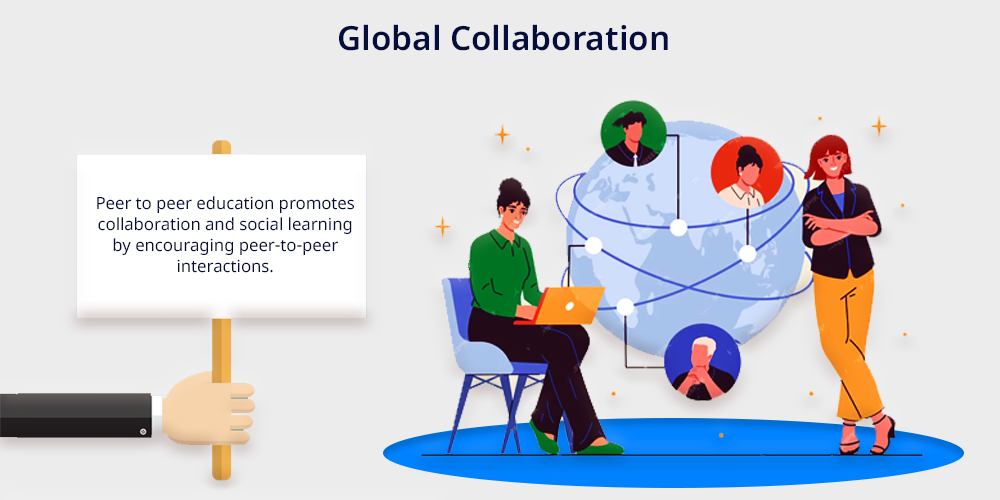
Peer to peer education promotes collaboration and social learning by encouraging peer-to-peer interactions, fostering empathy and understanding, and enhancing teamwork as well as social bonding.
Peer to Peer Learning in the Classroom
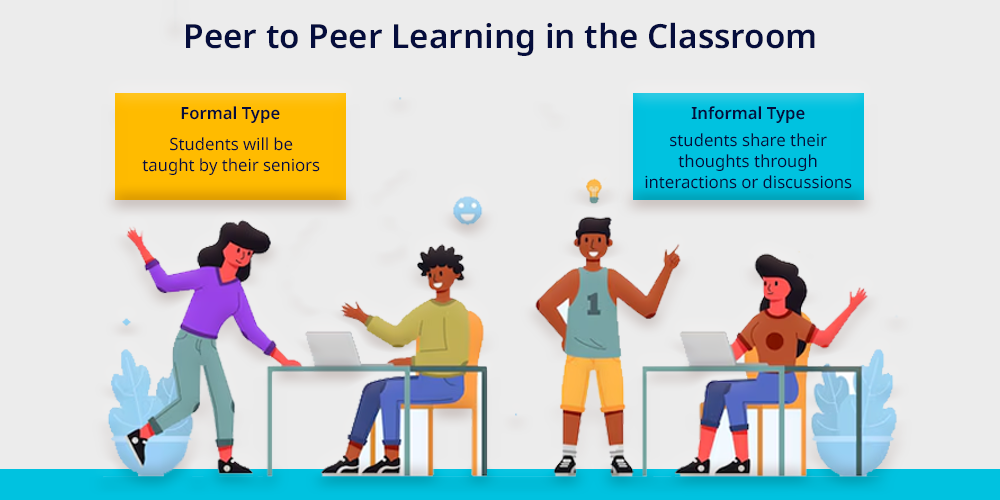
Peer-to-peer learning in the classroom is a method in which students learn and teach with the help of each other or instructors.
It is a collaborative method. In the peer-to-peer learning technique, one individual teaches another as an equal.
According to this model, the teacher helps to create a learning environment rather than imparting new knowledge. Peer to peer education is one of the effective learning tactics to promote holistic development among students.
Peer-to-peer learning in the classroom has two major types: Formal and Non-formal.
- Formal Type: Formal type is a more structured and organized method. In this method, students will be taught by their seniors or the same class group. This includes group projects, activities, community activities, apprenticeships, etc. It is one of the effective ways of enhancing the teaching-learning process.
- Informal Type: Informal type is mostly used in peer-to-peer learning. In the informal type, students share their thoughts through interactions or discussions. In this type of debate, discussion rounds and collaboration skills were used to promote peer-to-peer education.
Difference Between Peer to Peer Learning in the Classroom and Workplace
Peer-to-peer education in classrooms and workplaces is very much essential for promoting a collaborative environment and providing equal opportunities to everyone.
Peer to peer learning in the workplace focuses on organizations’ motives and workplace ethics.
Whereas, peer to peer education focuses on academic growth and educational opportunities. Below you can check the detailed comparison of peer to peer Learning in the classroom and workplace.
| Aspects | Peer to Peer Learning in the Classroom | Peer to Peer Learning in the Workplace |
| Definition | Peer-to-peer learning in the classroom is a cooperative method where students and mentors learn from one another, creating a learning environment where skills are developed and knowledge is exchanged. | Peer to Peer learning in the workplace is a a cooperative approach that creates a dynamic environment for skill development and knowledge sharing by allowing employees to learn from and share knowledge with their peers. |
| Concentration | Peer to peer education focuses on the classroom’s critical thinking mastery of academic material and exam or assessment preparation. | Peer-to-peer learning in the workplace focuses on addressing real-world challenges, where practical insights, experiences, and job-relevant skills are shared, and continuous improvement is encouraged. |
| Formation | This learning focuses usually on the supervision and direction of teachers in a supervised setting. | Under this education, the focus was laid on organizational objectives and immediate applicability and is frequently more dynamic and informal. |
| Objective | In the classroom, it focuses on improving student involvement, encouraging teamwork and cultivating social skills. | In the workplace, increasing group output promotes knowledge sharing and creates a collaborative learning culture. |
| Example | Examples of peer-to-peer learning in the classroom include group projects, discussions, debates, and collaboration. | Examples of peer-to-peer learning in the workplace include mentoring, knowledge-sharing meetings, group projects, and casual conversations. |
Examples of Peer to Peer Education
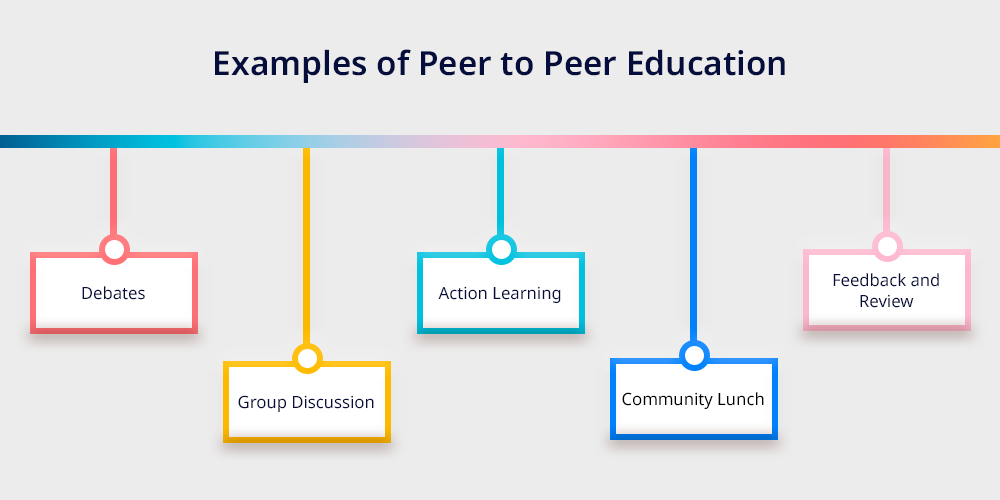
Encouraging knowledge sharing among students and team members enhances team skill sets, fosters a cooperative environment, and promotes peer relationships alongside academic goals.
Below you can check the examples of peer to peer education.
1. Debates:
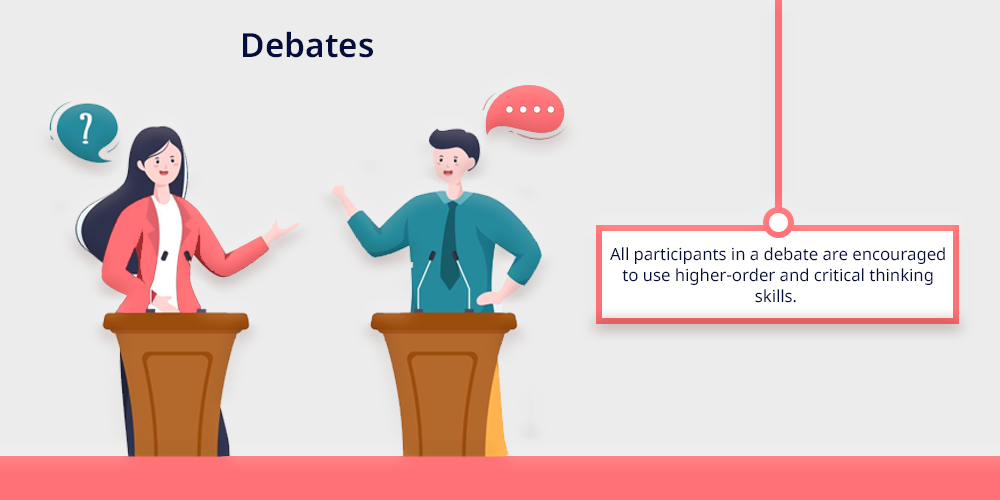
Debates are one of the effective examples of peer to peer education.
Through debates, students engage with diverse perspectives and articulate their thoughts and plans more effectively.
All participants in a debate are encouraged to use higher-order and critical thinking skills.
2. Group Discussion:
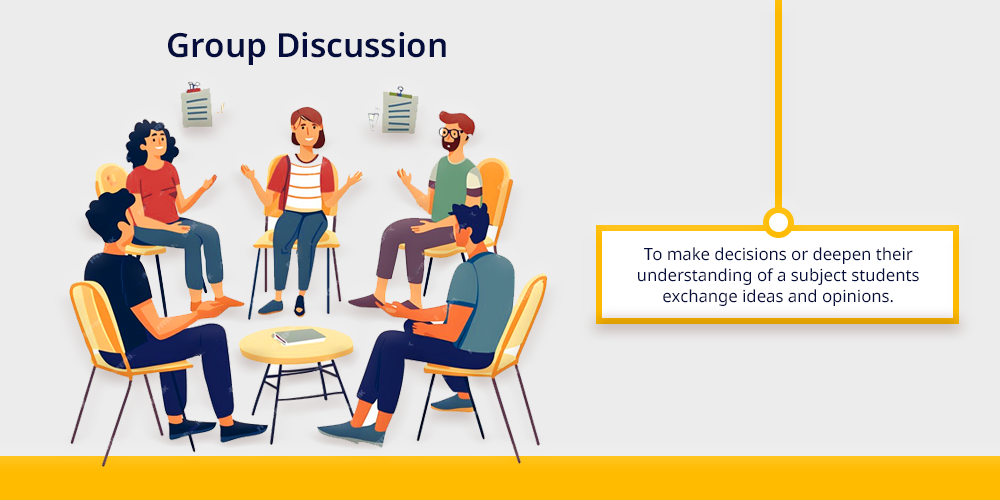
Group discussion is one of the effective example of peer-to-peer education. To make decisions or deepen their understanding of a subject, students exchange ideas and opinions.
Like debates, group discussions don’t concentrate on coming up with new ideas or learning initiatives.
3. Action Learning:

In action learning students of senior classes teach their junior ones. It is one of the effective ways of teaching the learning process.
This enhances the ability to express thoughts as well as boosts confidence among children. In action learning, a small group was created to provide educational insights.
4. Community Lunch:
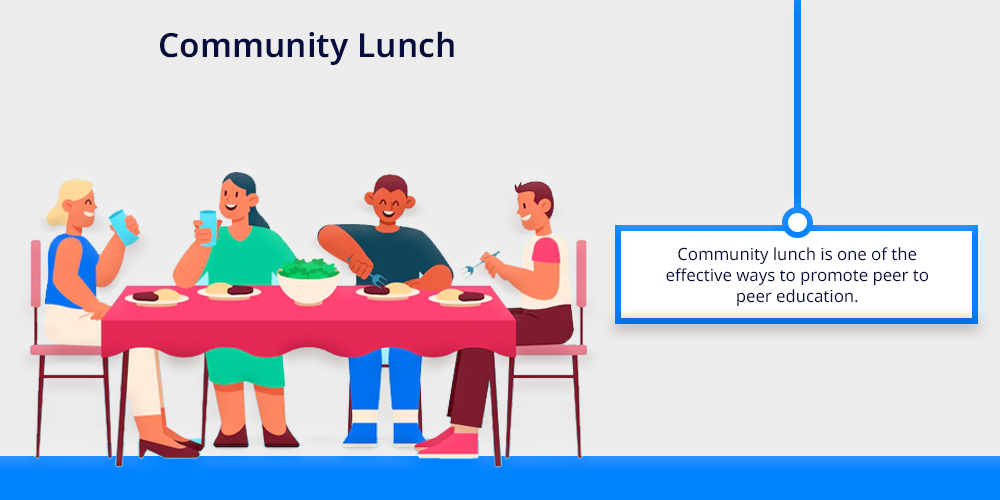
Community lunch is one of the effective ways to promote peer to peer education. Through community lunch, students can engage in various aspects of literacy and personal goals.
Such activities promote holistic development and boost children’s confidence by encouraging social interactions, such as sharing lunch.
5. Feedback and Review:
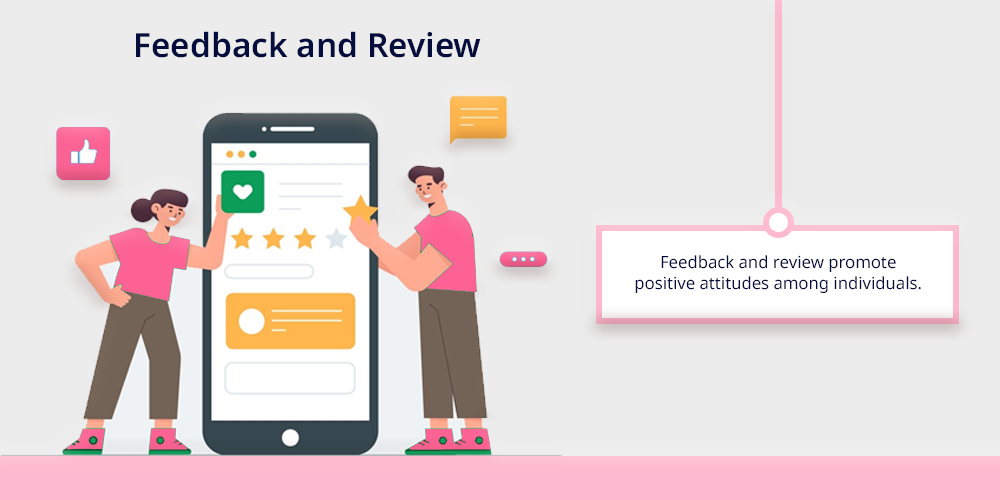
Feedback and reviews promote positive attitudes among individuals. Peers evaluate a reviewee’s performance, abilities, attitudes, and skills through a process called a peer performance review.
Disadvantages of Peer to Peer Education
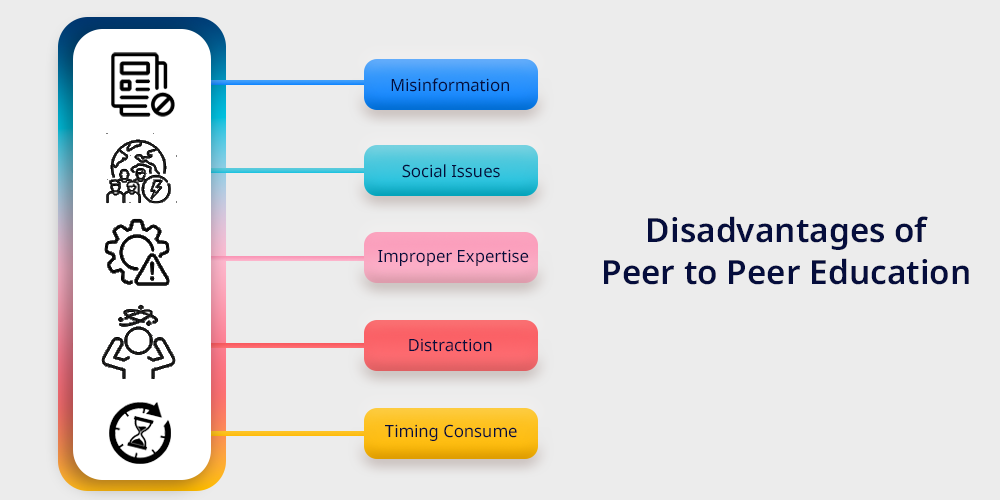
Peer to Peer education is very much beneficial among students to develop a positive learning environment and provide equal opportunities to every child.
However, peer to peer education has some disadvantages that hinder the learning outcomes. Here are the disadvantages of peer to peer education.
- Misinformation: One drawback of peer-to-peer education is the possibility of misinformation, as students might unintentionally share incorrect knowledge. This loses the trustworthiness of the information.
- Social Issues: One of the major disadvantages of Peer to Peer education is social issues. Social difficulties among children can create barriers to understanding and limit their ability to engage equally in the learning process.
- Improper Expertise: One limitation of peer-to-peer education is that children might struggle to obtain in-depth or expert knowledge on certain topics. As most sharing peers don’t have much experience in the teaching methods and learning process, it reduces the learning abilities among learners. Lack of expertise causes improper dissemination of information.
- Distraction: Some students may find it difficult to focus and concentrate in peer learning environments due to interruptions and distractions. This hinders the learning outcomes and makes students more inactive.
- Timing Consume: Compared to traditional teacher-centred instruction, peer-to-peer education might take longer to complete, which could affect the amount of material covered in the course.
How to Implement Peer to Peer Education?
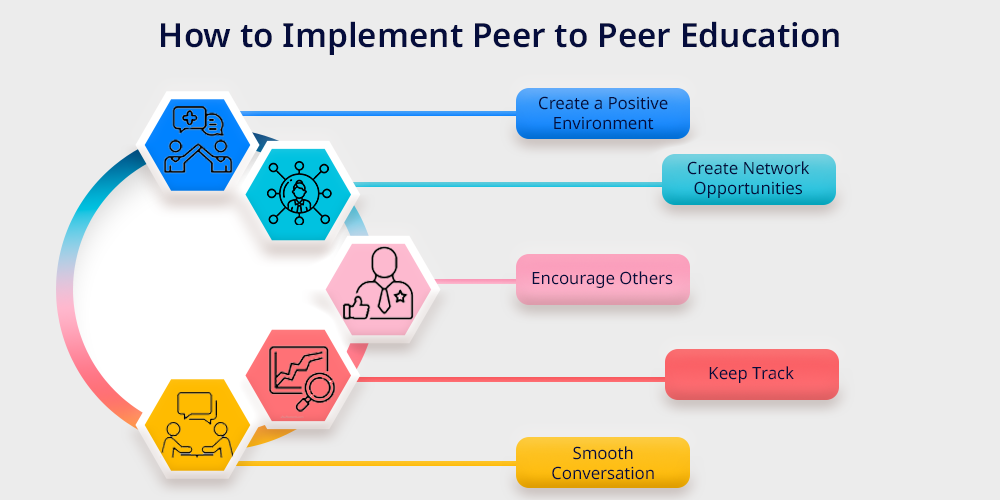
One kind of training and mutual learning approach is peer-to-peer learning. Participants on the same level participate in cooperative learning. In a variety of circumstances, peer-to-peer learning is invaluable.
Candidates can implement peer-to-peer learning through various initiatives. Below are some initiatives to implement peer-to-peer education.
- Create a Positive Environment: A positive and safe environment is very much essential in promoting peer to peer education. Through it, students must be comfortable asking questions without fear of embarrassment. Stress management is also important, and it involves communicating with respect.
- Create Network Opportunities: New ideas and viewpoints can be found through networking opportunities. Organize office seminars and happy hour, get-togethers. These sharing occasions will foster relationships and trust between professionals and students.
- Encourage Others: Students’ encouragement is one of the effective ways to develop peer-to-peer learning. Encouraging students helps others participate more positively, boosts their confidence, and supports better learning outcomes.
- Keep Track: Request comments and feedback from your students regarding the lessons they have studied. Keep track of how many students are using the instructional materials. You can utilize this knowledge to enhance peer training initiatives in the future.
- Smooth Conversation: A facilitator will make sure everything goes as planned. While they should not participate directly, they should maintain the flow of the conversation. They must maintain their objectivity, and their position carries no authority.
Conclusion
Through encouraging critical thinking, self-assurance and teamwork, peer-to-peer education is essential for improving children’s development.
This cooperative learning strategy not only improves academic achievement but also helps students develop critical, social skills and lessen feelings of loneliness.
Even though there are obstacles like false information and diversions, peer-to-peer learning has far more advantages than disadvantages.
Educators and parents can successfully implement peer-to-peer education strategies by fostering an environment that is conducive to learning, encouraging participation, and facilitating open communication.
In the end, this approach builds a supportive community that helps students thrive in both their academic and social development.

